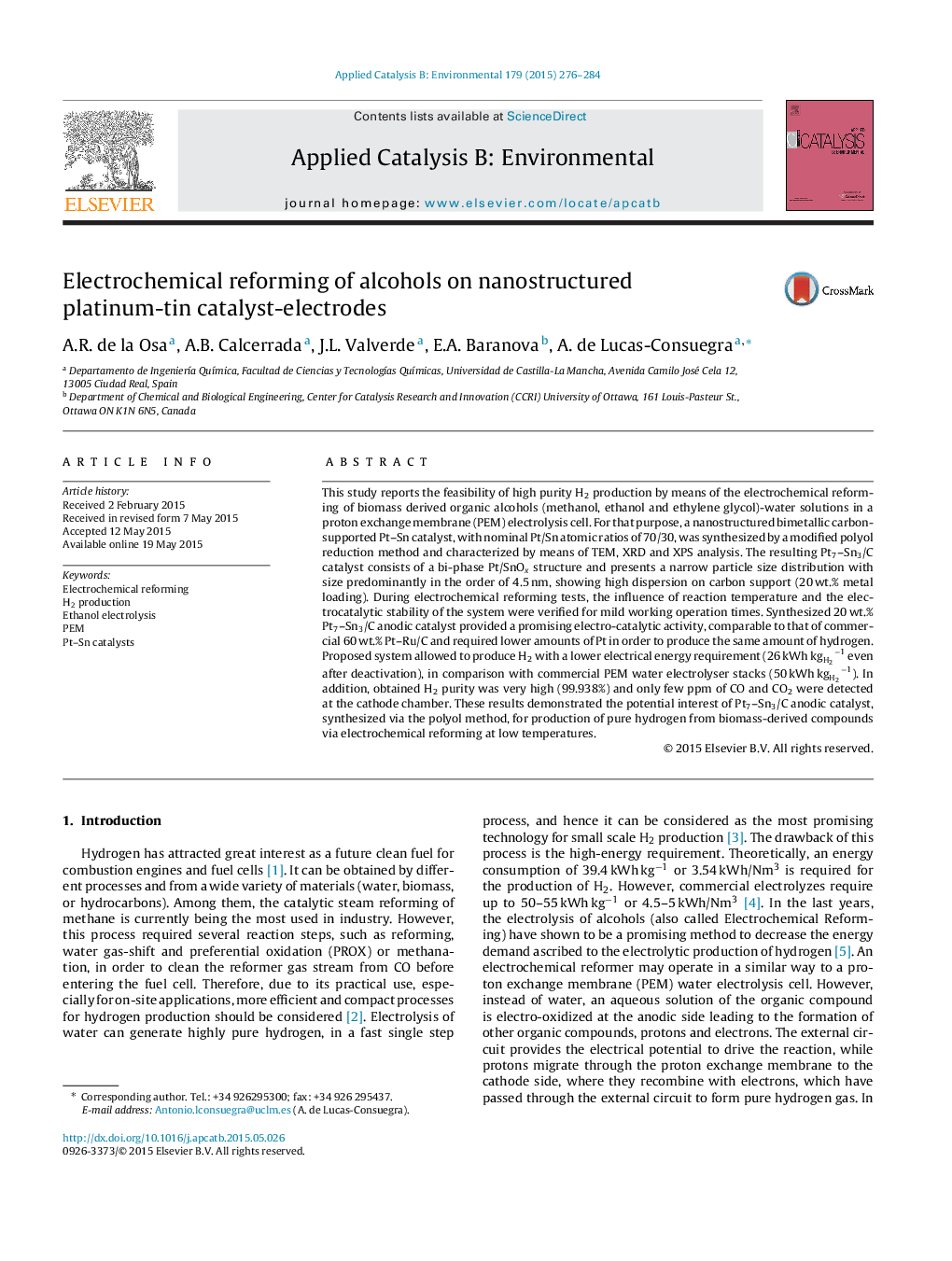| کد مقاله | کد نشریه | سال انتشار | مقاله انگلیسی | نسخه تمام متن |
|---|---|---|---|---|
| 45457 | 46412 | 2015 | 9 صفحه PDF | دانلود رایگان |
• PEM electrochemical reforming of alcohols was developed for pure H2 production.
• Nanostructured Pt–Sn/C synthesized by polyol reduction method was used as anode.
• The main reaction conditions were experimentally optimized for each molecule.
• Electrocatalytic activity of Pt–Sn/C was comparable to commercial Pt–Ru/C catalyst.
This study reports the feasibility of high purity H2 production by means of the electrochemical reforming of biomass derived organic alcohols (methanol, ethanol and ethylene glycol)-water solutions in a proton exchange membrane (PEM) electrolysis cell. For that purpose, a nanostructured bimetallic carbon-supported Pt–Sn catalyst, with nominal Pt/Sn atomic ratios of 70/30, was synthesized by a modified polyol reduction method and characterized by means of TEM, XRD and XPS analysis. The resulting Pt7–Sn3/C catalyst consists of a bi-phase Pt/SnOx structure and presents a narrow particle size distribution with size predominantly in the order of 4.5 nm, showing high dispersion on carbon support (20 wt.% metal loading). During electrochemical reforming tests, the influence of reaction temperature and the electrocatalytic stability of the system were verified for mild working operation times. Synthesized 20 wt.% Pt7–Sn3/C anodic catalyst provided a promising electro-catalytic activity, comparable to that of commercial 60 wt.% Pt–Ru/C and required lower amounts of Pt in order to produce the same amount of hydrogen. Proposed system allowed to produce H2 with a lower electrical energy requirement (26 kWh kgH2−1kgH2−1 even after deactivation), in comparison with commercial PEM water electrolyser stacks (50 kWh kgH2−1kgH2−1). In addition, obtained H2 purity was very high (99.938%) and only few ppm of CO and CO2 were detected at the cathode chamber. These results demonstrated the potential interest of Pt7–Sn3/C anodic catalyst, synthesized via the polyol method, for production of pure hydrogen from biomass-derived compounds via electrochemical reforming at low temperatures.
Figure optionsDownload as PowerPoint slide
Journal: Applied Catalysis B: Environmental - Volume 179, December 2015, Pages 276–284
